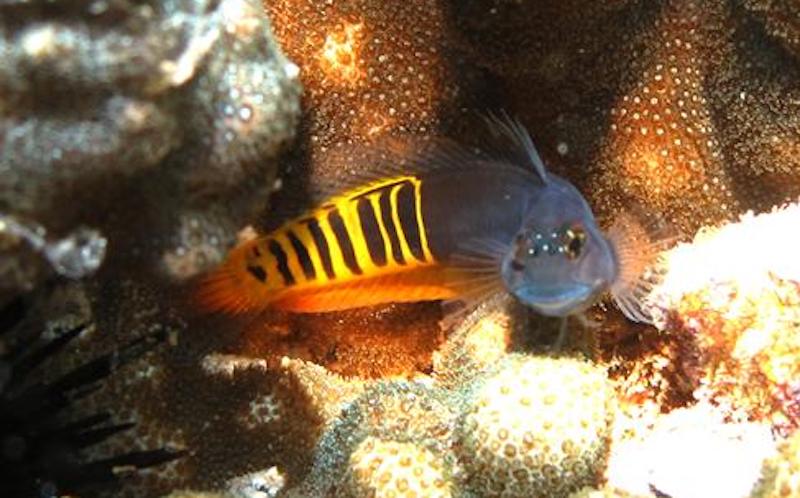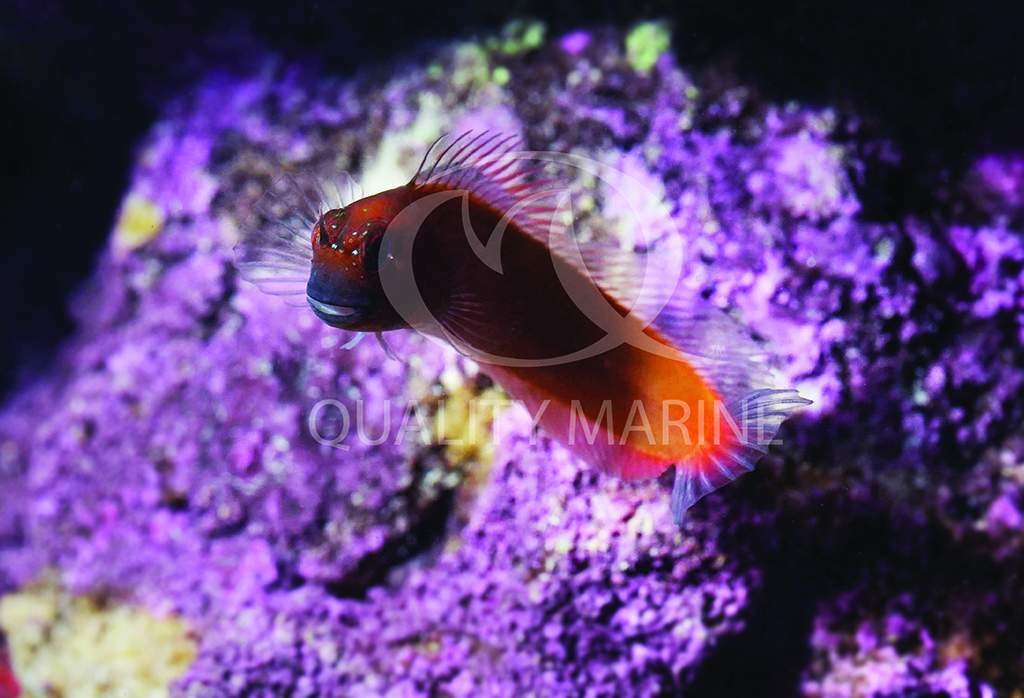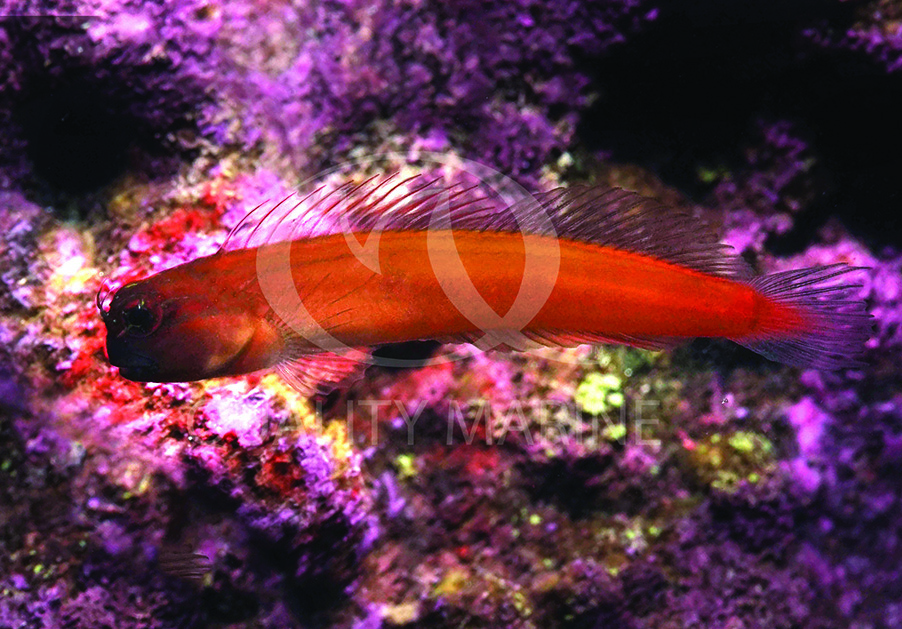Livestock supplier Quality Marine has successfully spawned and raised the Gulf Blenny, Ecsenius pulcher. The species was aquacultured in the QM Labs hatchery in Los Angeles, California, and QM Labs is the first to accomplish this on a commercial level in the United States.
You may not recognize the Gulf Blenny at first sight as unlike its cousins it is not a common species in the saltwater aquarium trade. But Jake Adams wrote about it, its scarcity and its beautiful tail markings that give wild adult fish their scientific name.

“Jake Adams suggested it be called the Tiger Midas, which would be a fitting name and that’s pretty much it.” Quality Marine said on their website.
“Tiger Midas fits because as adults, the males of this species will have a dark blue/grey head, with a yellow/orange tail, and the tail will have dark vertical tiger stripes throughout. The females will have this same orangish tail and blueish head but will usually lack the stripes.”
“It’s worth noting at this point that the juveniles are usually a single color, with their whole body being the bluish grey or shades of fire orange. The colorations observed in the offspring has been more random than other species cultured by QM Labs. Our broodstock pairs are from the wild and have vibrant colored tails, however, our batches do not always produce colored tails. We’re only marketing juveniles at this point.”

Aquarium care
Treat the Gulf Blenny as you would a Tailspot Blenny, Ecsenius stigmatura, by providing a medium-sized reef tank with lots of rock to perch on and hide in, as well as algae for grazing, and non-boisterous, non territorial tankmates. Being aquacultured these are already taking pellet foods which can be supplemented with frozen Brineshrimp and Mysis. They attain a maximum length of four inches/10cm.
We hope the Tiger stripes will develop on captive-bred adults (at least in mature males,) as it is this species’ most attractive feature. But it’s another excellent achievement in captive breeding by QM, another tank-bred species to look out for, and one that will benefit the saltwater aquarium industry as a whole for the future.



